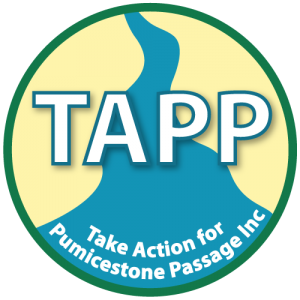Pumicestone Catchment Convergence 2021
Notes Day 3 – Sustainable development
-
Environment there is a link to local economy (Need sustainable economy to support a sustainable environment)
-
Residents need to understand their space and ownership within the overall Catchment.
-
Boats and on water area activities are not occurring as per regulations of these activities.
-
Living on boats how to manage waste and other impacts and should only be 48hr stay?
-
The aura development increased population yet less space for toy storage.
-
On water hire facilities limit access space to service increase demand.
-
Tourism is resource hungry and returns can be over stated.
-
There is a need to increase infrastructure to support growth now and into the future. (boat ramps Parking etc)
-
Wildlife is under pressure there needs to be a balance between humans and wildlife.
-
Regulate north of Bells creek the passage looks wide however usable water is limited.
-
Do we have a true picture to monitor on water activities as there is a bias on some lawful activities?
-
Take pressure of the Nth Sone of the passage. Can a sea plane be compatible in this space?
-
User pay for tourism but locals free.
-
Hinterland open space over loved national parks forestry areas.
-
Matters of local environmental significance are only considered if offsets are triggered. Should be reviewed in planning scheme.
-
How to create new jobs a first nation economy.
-
Need to have a greater connection to the catchment landscape understand where you area. ( strong environmental systems view.)
-
Sustainable development should be 6 star and look at the options to retro fit other developments for example community gardens etc.
-
Development needs to look at space to minimise impact on the passage.
-
Mixed water uses impact on the passage needs to be identified.
-
All stakeholders need to understand their impacts on the landscape within the catchment.
-
Target or support public transport to natural assets across the catchment.
-
No Development in sensitive areas. Need to have Sustainable areas identified (lowest impact zones?)
-
Strengthen the Ramsar commitment with in the region.
-
Identify areas to be restored through development offsets.
-
Support intelligent development if it exists.
-
Support Technologies that reduces negative catchment impacts.
-
The State currently dictates extra development without managing impacts with in the region.
-
Need to respect open space currently some motorised activities don’t respect the landscape.(catchment)
-
Needs to be greater understanding that a development foot print has on the impacts of the regional foot print.
-
Renewable energy across developments but not as offsets.
Five points for the Catchment future: 2050
-
Pumicestone Catchment has a viable and economic sustainable agricultural sector.
-
We have a managed population growth within the catchment with minimal negative impact.
-
Strong planning across the catchment through all levels of government. We should have a clear picture of the vision of a 2050 catchment.
-
Use tech to support the catchment eg hi res maps etc.
-
Natural environment is in place to have the built environment working for it not against it.
Five points part 2
-
No net loss of native forest and degrading of water quality.
-
Maintain greenspace based on per capita including waterway recreation.
-
Strong ownership of the catchment and valued by residents and visitors.
-
Have $’s to support the management of the catchment to protect or enhance the environmental outcomes.
-
Urban and natural green infrastructure is supported by urban intensification.
Points from the Map
Section 1
-
Disturbed feeding and roost birds
-
How do you manage water activities if we don’t understand the current effects on the passage?
-
Model dynamics of the ocean side of Bribie Island.
-
Should Building heights be increased to accommodate population rather than increase footprint. However not on the shoreline inland.
-
Make sure we understand the acid sulfate story within this part of the catchment, and how basement water is managed.
-
Conduct a spatial and time survey (time of day, duration, location , numbers, season of marine activities to determine more specific links between recreation activities and impacts.
Section 2
-
In both section 1 and section 2 what do we know about ground water and the relationship between the areas?
-
Improve habitat mapping to include sea grass
-
How does impacts in section 2 impact the nth flows
Section 3
-
Control people using the sand banks with animals disturbing the wildlife etc.
-
Improved fire management on the island.
-
Monitor Camping capacity for National Parks
Section 4
-
Match high recreation activities to forestry and National parks activities not the other way round.
-
There needs to be an improved effort to manage sediment from dirt roads due to recreational vehicles.
-
Improve the id of sediment point sources.
-
Value of habitat conductivity in relationship to linear infrastructure.
-
Need for a serious groundwater study to explain ag impacts.
-
Monitoring Point Source sediment and pollution hot spots – links to ground water transport of pollutants.
Northern hinterland area;
-
Have all forms of agriculture in the region work to industry best practice.
-
What do land owners need to know to manage their land to minimise negative impacts across the region.
-
Within the steep country of the catchment there is a need to improve sediment capture.
-
Measure the impacts of the many small hobby farms to compare to productive ag farms.
